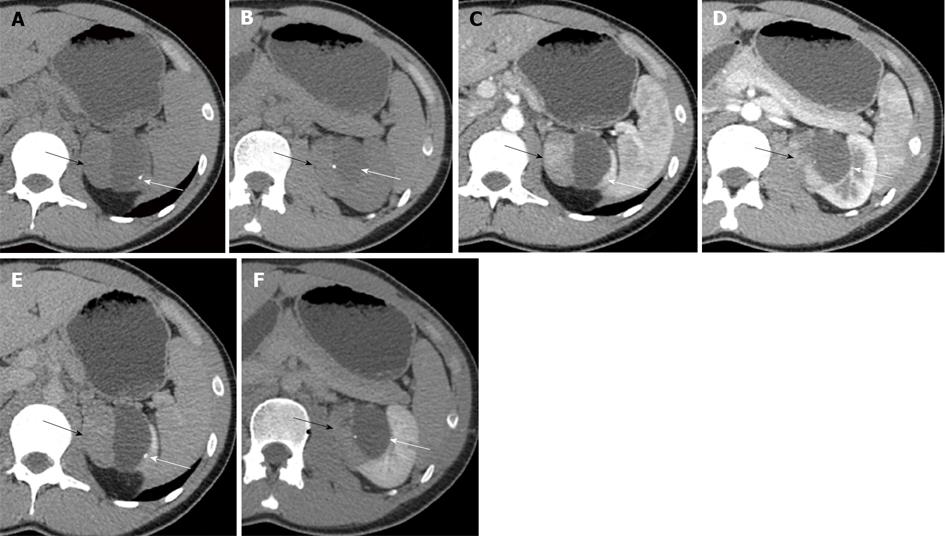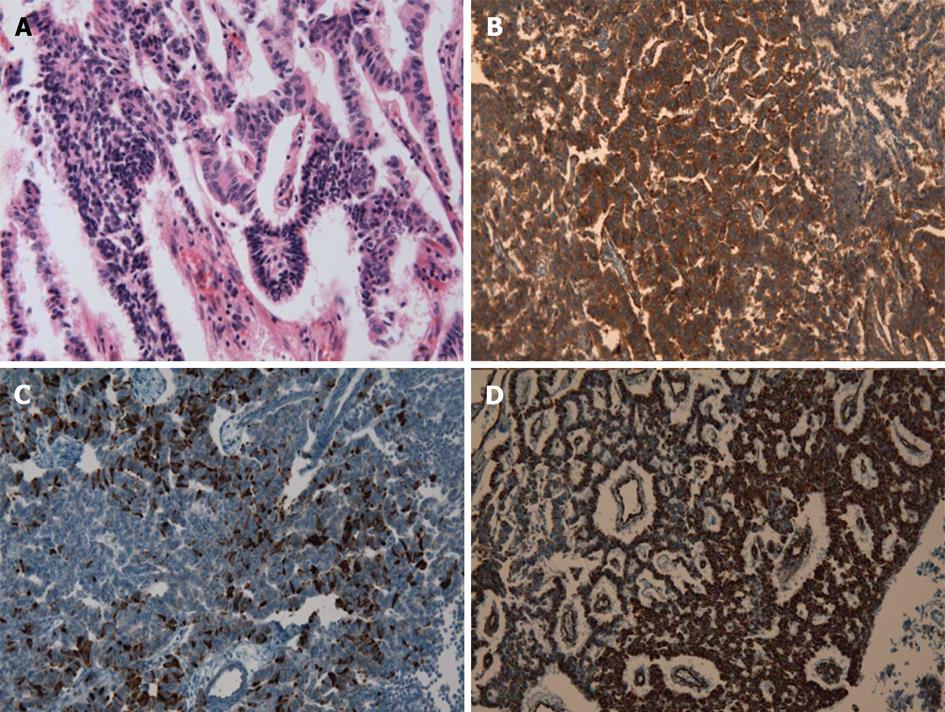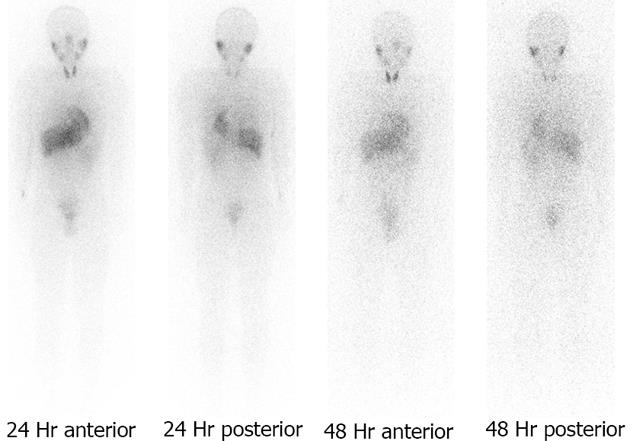Copyright
©2013 Baishideng Publishing Group Co.
World J Radiol. Aug 28, 2013; 5(8): 328-333
Published online Aug 28, 2013. doi: 10.4329/wjr.v5.i8.328
Published online Aug 28, 2013. doi: 10.4329/wjr.v5.i8.328
Figure 1 Axial images of the dynamic abdominal computer tomography scans show a well-circumscribed, bilobed renal mass in the left kidney that is composed of a solid part and a cystic part containing peripheral wall and septal calcifications.
A, B: Pre-contrast images; C, D: Corticomedullary phase images; E, F: Nephrographic phase images. The lesion has significant enhancement in the right half of the solid portion during the corticomedullary phase and enhancement washout during the nephrographic phase (black arrow). A non-enhancing cystic portion is evident in the left half (white arrow).
Figure 2 Coronal images of dynamic computer tomography scans show a well-circumscribed, bilobed renal mass in the left renal upper pole with a relatively preserved reniform shape and no definite perirenal fat infiltration or renal sinus invasion or herniation.
The early enhancing solid right half (thick arrow, A) and the non-enhancing cystic left half (thin arrow, A) are apparent. The delayed washout pattern of the enhancing solid portion is evident in the nephrographic phase (thick arrow, B).
Figure 3 Gross specimen is a whitish, soft yellowish mainly solid mass with well-encapsulated margins and bulging contour.
It consists of hemorrhagic foci and a large cystic component that comprises of half of the mass. There was no gross evidence of perirenal fat infiltration.
Figure 4 Carcinoid tumors of the kidney are composed of nests and cords of neuroendocrine cells that are noticeable under microscopy.
Small- to intermediate-sized tumor cells have uniformly round nuclei with net formation, abundant cytoplasm, and prominent rosette-like structures (A, HE stain, ×200). The neoplasm had low mitotic activity (1/10 HPF). Immunohistochemical studies were performed, and the tumor cells tested strongly positive for the neuroendocrine markers (×200), CD99 (B), chromogranin (C), and vimentin (D). The cells were negative for cytokeratin, the marker for renal cell carcinoma (not shown). Microscopic and immunohistochemical findings were consistent with a well-differentiated neuroendocrine tumor, so called carcinoid tumor.
Figure 5 Normal physiologic uptake of I-123 meta-iodobenzylguanidine observed in the salivary glands, nasal mucosa, myocardium, liver, bowel, and both thyroid lobes.
Low-level uptake was also observed in the lungs on 24-h image. Meta-iodobenzylguanidine (MIBG) was excreted into the urine, and physiologic activity was observed in the bladder. No definite abnormal accumulation of MIBG was apparent in the whole body through the 48-h image.
- Citation: Yoon JH. Primary renal carcinoid tumor: A rare cystic renal neoplasm. World J Radiol 2013; 5(8): 328-333
- URL: https://www.wjgnet.com/1949-8470/full/v5/i8/328.htm
- DOI: https://dx.doi.org/10.4329/wjr.v5.i8.328













